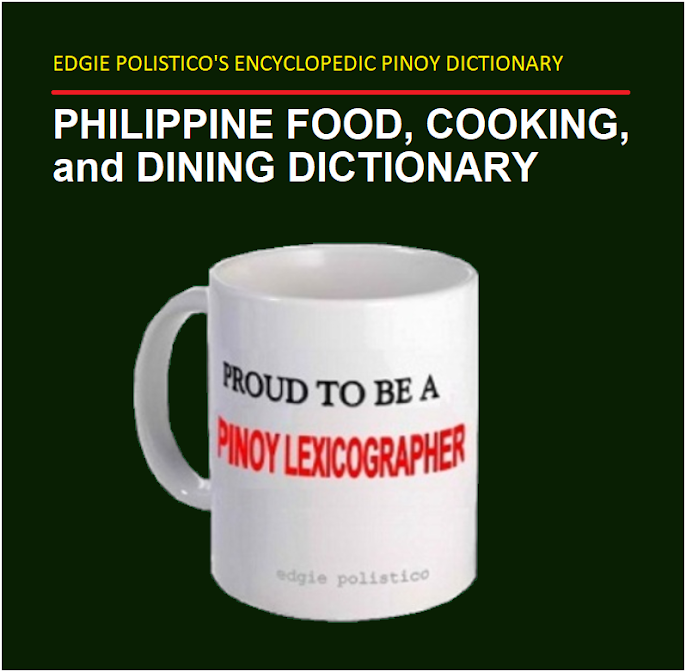ensaymada – /en-say-má-da/ Tagalog and almost all other dialects bread/pastry; dw Span. saim [pork lard] > ensaimada <>ensaimades) [n.] spiral soft cheese bun.
- Also spelled as ensaimada in almost all languages and vernaculars in the Philippines
Filipino ensaymada has its origin in Majorca, Spain, where it was originally made with flour dough, water, sugar, eggs, and pork lard called saim. Thus, it is called ensaimada.
The Pinoy version substituted pork lard with butter, and several sub-variants of ensaymada are now seen and sold anywhere in the Philippines that include: ham ensaymada, ube ensaymada, mongo ensaymada, ensaymada Malolos, and the all-time-favorite cheese ensaymada.
Pinoy ensaymada is still a soft dough bread in a spiral form that wounds towards the center, often glazed with melted butter or margarine and lightly sprinkled with or pressed and rolled on refined white sugar and topped with grated cheese.
Enhanced variations have strips of ham, macapuno strings, or a sweet paste of ube or ube jam.
The Bulakeños started making before World War II their large version of ensaymadas topped with lots of grated cheese and thin slices of salted duck egg.
The latest variation of ensaymada is no longer spiral in shaped but a clustered several pieces of softy yellowy buns made with the same ensaimada ingredients and still glazed with butter or margarine sprinkled with white sugar and generously topped with grated cheddar or filled cheese.
.JPG) |
| Some Batangueños migrated and brought their baking expertise to Mindoro. These ensaymadas in Roxas, Oriental Mindoro came from a Batangueño bakery in town. |
.JPG) |
| These are the ensaimadas of the Red Ribbon bakeshop in Metro Manila. |
All photos by Edgie Polistico are copyrighted. ALL RIGHTS RESERVED.
If you liked this post, share it.
Let us know your opinion on the subject. Feel free to comment in the comment section, below. It is important for us to know what you think.
Tell us what other topics you would like us to write, share, and discuss.
For more about Filipino food, see this Philippine Food, Cooking, and Dining Dictionary. It is OPEN and FREE.
Continue to follow my blogs. You can also follow and learn more by joining us in our Facebook group. Have more bits and pieces about our kind of food, ingredients, and ways of cooking, dining, and knowing food culture across the 7,641 islands of the Philippines.
Encouragement and enthusiasm are not enough. I also need moral support, prayers, and anything else that can uplift my spirit and keep my good reasons. Keep them coming. All I know is that I am happy with what I am sharing and giving away. If you are pleased and happy with what I am doing, just smile and please share the happiness. Keep sharing and include to share the PHILIPPINE FOOD ILLUSTRATED. I feel energized when my blog becomes one of the reasons why you are happy and smiling.
Edgie Polistico
.JPG)
.JPG)
.JPG)
.JPG)
.JPG)
.JPG)





